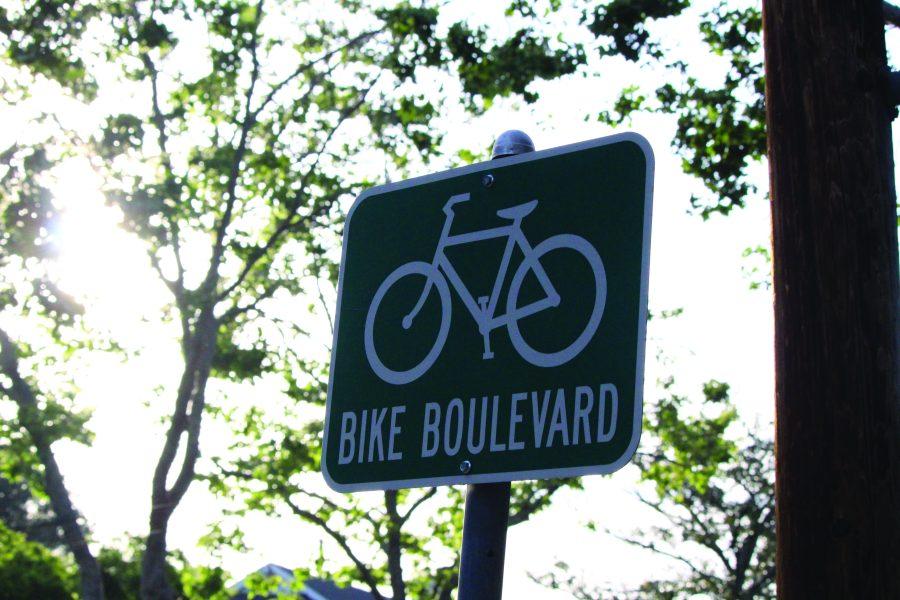The Palo Alto City Council is reopening for public discussion a concept plan that would create three new bike boulevards along Amarillo Avenue, Ross Road and Louis Road, as well as facilitate other pedestrian and bike improvements.
On April 18, three members of the City Council dissented from approving the concept plan, pushing discussion to an undetermined date.
According to Mayor Karen Holman, who voted against approving the concept plan, a major factor in reopening discussion is the size and complexity of the plan, which has over 200 pages and addresses everything from traffic flow to the amount of parking spaces that would be removed.
Holman also worries that the plan has not been properly vetted by the public.
“The city will typically have meetings with stakeholders and get information to them and inform them about the plans are from the cities perspective going forward, and the city knows how to do outreach but it seems like there was not enough of that or to the right people in this case,” Holman said.
While parts of the plan are being re-examined, the bike boulevards are expected to progress without much difficulty.
“Previously we [the City Council] have passed a comprehensive bike plan, so I do not think there are issues that are going to jeopardize that [the bike boulevards],” Holman said. “It is how it is implemented and the type of education and outreach that will be affected by it [the concept plan] coming back.”
Most of the new bike boulevards would be located in the midtown area in an attempt to promote more east to west and west to east bike travel, especially for kids who bike to school.
“The goal is to get some east-west connectors, that are especially important for [kids who bike to school],” Palo Alto City Councilman Greg Schmid said. “They [the City manager and his staff] try to identify routes that are on the bike to school maps and to make sure that it’s safe for kids to be out there during the morning commute.”
In addition, the concept plan includes a plan for various other bike and pedestrian improvements, such as, roundabouts, stop sign modifications and a variety of repaving initiatives.
However, some residents of affected areas are worried that the changes would eliminate parking in areas that already have limited parking space.
“Without exaggeration, well over 100 people come and go [into the First Baptist Church on Bryant Street] every afternoon,” a concerned resident wrote to the City Council. “There are businesses on site as well and they [people] all need to park somewhere. My family is rarely afforded the luxury of parking in front of our own home. The same is true for our neighbors. The loss of any parking spaces would be detrimental to the flow of everyday life for the neighborhood.”
Proponents acknowledge that some parking spaces would be removed, but they argue that parking on streets with the proposed improvements is far from completely utilized. Research in the staff report supports this position.
“At the corridor level, there is sufficient capacity to absorb these changes and the vast majority of residents and visitors would not recognize a parking impact,” the staff report said. “A few specific blocks, however, may not have availability to meet current parking demand, requiring residents and visitors to seek parking one block from their desired destination.”
However, some residents of affected areas are worried that the changes would eliminate parking in areas that already have limited parking space.
“Without exaggeration, well over 100 people come and go [into the First Baptist Church on Bryant Street] every afternoon,” a concerned resident wrote to the City Council. “There are businesses on site as well and they [people] all need to park somewhere. My family is rarely afforded the luxury of parking in front of our own home. The same is true for our neighbors. The loss of any parking spaces would be detrimental to the flow of everyday life for the neighborhood.”
Proponents acknowledge that some parking spaces would be removed, but they argue that parking on streets with the proposed improvements is far from completely utilized. Research in the staff report supports this position.
“At the corridor level, there is sufficient capacity to absorb these changes and the vast majority of residents and visitors would not recognize a parking impact,” the staff report said. “A few specific blocks, however, may not have availability to meet current parking demand, requiring residents and visitors to seek parking one block from their desired destination.”


Susanna • May 8, 2016 at 2:50 pm
But a smiling visitant here to share the love
(:, btw great pattern.